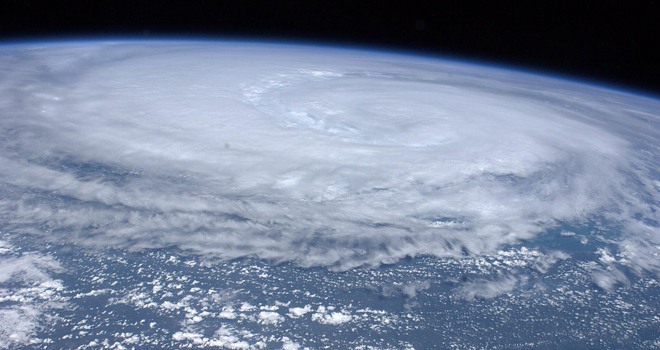Let’s stipulate right off the bat that cable news coverage of land-falling hurricanes is an abomination that P.T. Barnum would be proud of. That’s a no-brainer. We can leave it to people like Howard Kurtz to knock that softball right out of the park.
But the cable nets don’t dictate the forecasts of the National Hurricane Center or the National Weather Service, and state and local officials don’t rely on the cable nets when making disaster preparation decisions. So the logical leap made by critics that cable TV hype leads to overreaction by local governments is both wrong and frankly dangerous.
The second guessing in the wake of Irene is nothing new or unique to this storm. It happens with every hurricane that either peters out or changes course away from land. It drives professional forecasters nuts because the comfortable armchair cynicism leads to complacency the next time there’s a looming hurricane threat. What’s different about Irene is that it fell short of early predictions in the two cities with the largest media megaphones: DC and NYC. That amplifies the usual nonsense.
Consider a few facts: The average error on the NHC’s 5-day tracking forecast during the 2000s was more than 260 miles. Yet that represented a dramatic improvement in forecasting accuracy. Until 2003, the NHC didn’t even produce a 4 or 5-day forecast for public distribution because it simply wasn’t reliable enough. Through the 1990s, the NHC’s longest tracking forecast was three days and it had an average error of almost 240 miles. To summarize, over the course of less than 20 years, the NHC was able to extend its forecasting by two full days and the average error increased by only about 30 miles.

The forecast track for Irene was right on the money. I haven’t reviewed the precise numbers yet, but it was far below the average error. Does that mean the NHC performed even better than usual with Irene? Not exactly. Some storms are easier to track than others. When all of the surrounding weather influences on a storm are clear and relatively fixed, forecasting becomes a lot easier. Irene was a relatively uncomplicated forecast. All the computer-based forecast models were in close agreement, and the macro-weather patterns that steered her were predictable and reliable as these things go. (That being said, when a hurricane is running parallel to a coastline like Irene was, then the margin for error is a lot smaller because a wobble of a just a few miles early in the forecast period can mean big differences 3-5 days out — i.e., the difference between brushing the East Coast or missing it entirely — so Irene wasn’t an easy forecast in that sense.)
While hurricane track forecasting is one of the great scientific success stories of the last 100 years, hurricane intensity forecasting has lagged behind. The NHC has gotten better, a lot better, in recent years, but they’ll be the first to tell you that intensity forecasting is extremely difficult and not something their models are adept at predicting yet. Not only are there an almost infinite number of variables that go into feeding the hydro-thermal engine that is a hurricane, but we’re still not exactly sure what all of the major variables are, let alone how they all interact.
The bottom line is we have a lot better idea where a hurricane is going to hit than we do how strong it will be when it gets there. That uncertainty creates risk. How do you prudently address that risk? It’s really simple. You have to be more aggressive in your disaster preparation. That means getting people out early, while the getting is still good. It means closing flood gates, securing property, shutting down mass transit systems, and prepositioning first responders and relief efforts.
So set aside the cable TV hysteria. That’s a separate problem and a small one by comparison. The NHC is not getting caught up in its own hype (although there are occasions when professional forecasters disagree about whether the NHC downgrades weakening storms as quickly as the science would suggest, which hints at the tension between being a scientific outfit as well as being responsible for the safety of millions of people). Keep in mind the weather service wasn’t created to service TV meteorologists and their audiences. Its original purpose was to provide valuable information to the military (it was then under the secretary of war) and then later to commercial interests, all of whom had lives and substantial materials at stake.
State and local governments are not, in general, succumbing to the cable hysteria either. No official wants to spend scarce public funds on disaster preparation that may be prove to have been overkill. There’s no incentive in that. You can argue whether unseemly politicians seize the spotlight offered by looming disasters, but that’s a trifling debate for people who don’t have the responsibility for the lives and property of others.
The reality of the world we live in is that we simply don’t yet know how bad any given hurricane will be far enough in advance to give us the luxury of making evacuation decisions with 100 percent certainty that those evacuations will actually be needed. It’s against our modern nature to admit what we just don’t know or to reckon with the consequences of not knowing. It’s easier and probably gives some relief to our psyches to blame it on puffed up Weather Channel meteorologists or opportunistic politicians. But the bottom line is we just don’t know and it would be folly to pretend otherwise.






